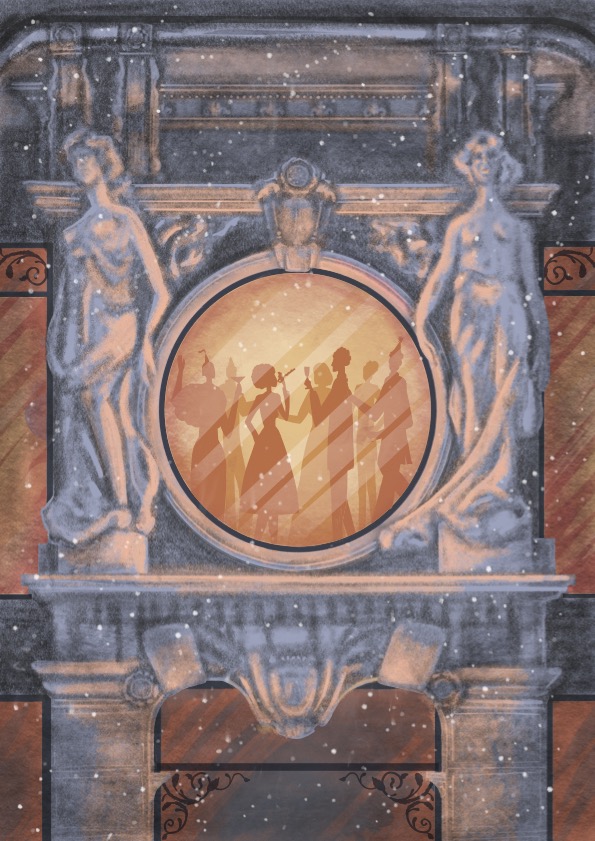by Ashley Caneva
This piece was written by the late Ashley Caneva who passed away at the beginning of 2023. She will forever be appreciated and missed by the InTrieste team
It was Christmas Eve, 1860. Queen Victoria sat on the British throne, America sat on the brink of a civil war, and the Austro-Hungarian Empire was beginning to wane, riding the coattails of several centuries of rule. Ferdinand Maximilian of Hapsburg-Lorraine, Archduke of Austria and brother to Emperor Franz Joseph I, had recently married his second cousin, the beautiful Charlotte of Belgium.
Maximilian and Charlotte’s marriage brought the respective crowns together with great celebration and hope for the future as she was the daughter of King Leopold I of Belgium and the granddaughter of Louis-Phillipe I of France. Although their story has been highly romanticized over time, old letters and documents indicate that while Charlotte was thrilled about the match – Maximilian figured he would get used to her. The two had married three years prior, in the same year that Maximilian became the Viceroy of Lombardy-Venetia. His brother the Emperor was not a fan of his liberal politics, however, and he had been relieved of his post in 1859.
Trieste had been a stop on their honeymoon, and they had returned to build their royal residence, Castello Miramare, on the promontory just outside the city. After years of planning, building, and decorating, the ground floor was finally ready for them to take up residence. Furnishings had been designed to suit their individual personalities, while simultaneously blending the most popular styles of the day. Maximilian’s love for his time at sea was reflected in the nautical wood paneling chosen for his personal bedroom, which was extremely different from the upper rooms which were designed for meeting with (and impressing) their dignified guests. Although the interior of the top floor was still a work in progress, they were delighted to finally move out of their temporary home in the smaller “Castelletto” they had built on the grounds and into their own castle. This would surely be a Christmas Eve to remember.
Unfortunately, history would in fact remember their time at Miramare as brief and ill-fated. They would reside in the castle for less than 3 years before Maximillian, whose “mutton chops” were dwarfed only by his ambitions, would receive an invitation to become Emperor Maximillian I of Mexico. Encouraged by his young bride, he would accept the new regal title (which must have seemed like true redemption to a failed viceroy) and they would leave Miramare to establish their rule in Mexico.
The situation in Mexico was a powder keg. The UK, France and Spain had joined forces to ensure Mexico paid debts owed to them – but when it was discovered that France wanted to take Mexico for the French Empire, Spain and the UK decided not to be involved and pulled their troops out. France did indeed invade and add Mexico to its dominion. The establishment of the new Second Mexican Empire (or as I like to call it, the French Empire – part 2) was acknowledged by many world powers and seen as favorable by many Europeans who wanted to see peace between recently-warring France and Belgium solidified. However, it was charged with political and religious shifts in power. Maximilian had been very cautious to ensure that the Mexican people had his support as their new ruler, but those who wanted him in power were not entirely forthright. Mexican Republicans led by Benito Juarez provided strong resistance to French puppet-government, and now Maximilian and Charlotte found themselves right at the epicenter of a civil war. Napoleon III, under pressure from French subjects and the United States (allied with the Mexican Republicans), announced the withdrawal of French troops from Mexico in 1866.
In desperation, Charlotte took it upon herself to return to Europe and sought support and reinforcements from Napoleon III, and later at her husband’s request, Pope Pius IX. To her horror, both of them refused to get involved. In the wake of marital strains (such as the forced removal of their adopted sons from their mother), her husband’s endangerment in the Mexican Civil War, and now abandonment from supposed allies, Charlotte’s mental health began to rapidly deteriorate. Paranoid and convinced that she was being poisoned, she would never return to Mexico. Instead, she would retreat to Miramare, closely watched by a medical team.
Meanwhile in Mexico, despite support expressed from important public figures and the reinstatement of his imperial titles by his brother Franz Josef in an attempt to protect him, Maximilian was executed by firing squad. It would be six months before Charlotte became aware of his death. She eventually returned to Belgium, where she lived for over 40 more years in a state of mental decay.
Miramare would remain: hosting a series of important guests, housing a duke, and being used by the militaries of Germany, New Zealand, the United Kingdom, and the United States. Today, her only occupants are tourists who pass through with cameras, audio guides, and a look of wonder in their eyes. Depictions of Maximilian boasting the grandeur of an emperor are everywhere, along with Mexican symbolism. The garden Charlotte helped design is still a beautifully serene spot to take in a Trieste sunset and reflect.
Despite the spectacular downfall of Maximilian and Charlotte’s plans, who were never officially crowned in their imperial roles, their legacies live on through Miramare. Their castle on the sea still stands and bears witness to Trieste’s storied past. She has been occupied by royals and dukes, Nazis and allied troops. She is the visual representation of a dream deferred, and yet she remains a beautiful beacon on the edge of the Adriatic. For better or worse, without Miramare and the events that took place within her walls, Trieste – and the world – would not be the same.





























